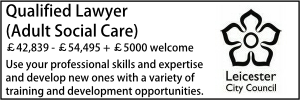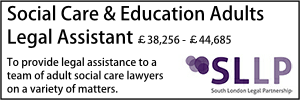Children’s Centres and Children’s Trusts to be main delivers of CAMHS
- Details
Children’s Centres and Children’s Trusts are two of the main organisations through which children and adolescent mental health services (CAMHS) are to be delivered by local authorities and their partners, according to the government’s response to the 2008 independent review of CAMHS.
The response, published jointly this month by the Department of Health and Department for Children, Schools and Families, underlines the need for greater consistency of provision of effective services. As a way of achieving that, it repeatedly emphasises the need for co-operation between providers.
The document also lays out government commitments in the field, outlines a “package of support” to fulfill these aims and gives “a description of the effective services we expect all local areas to be working towards”.
In the document, “Keeping Children and Young People in Mind - The Government’s full response to the independent review of CAMHS”, more than 30 different agencies are mentioned. These are all seen as having a role to play and range from schools to Youth Offending teams to GPs and branches of adult services such as housing. The document summarises how they fit into CAMHS, explaining the latest legal and practical issues which affect them.
But Children’s Centres - which the government expects to number 3,500 by March this year - stand out particularly and are seen as having a central and growing role in the integrated provision of child and family support and health services.
The response says: “The Apprenticeships, Skills, Children and Learning Act 2009 requires local authorities – so far as is reasonably practicable – to arrange sufficient provision of children’s centres to meet local need. In addition, a duty is now placed on local authorities, Primary Care Trusts and Jobcentre Plus to consider whether each of their services for young children and their parents should be provided through children’s centres.” The government is encouraging co-location of Children’s Centres with health centres but where this is not possible, it says, “working effectively with health services is an integral part of the core offer which all children’s centres must deliver in order to achieve designation”.
While Children’s Centres are in the front line of service provision, Children’s Trusts will be playing an increasingly important role in the management and direction of CAMHS. Under the Apprenticeships, Skills, Children and Learning Act 2009 (ASCL), all local authorities are required to have a Children’s Trust Board in place by April this year. Representatives of Primary Care Trusts and the local authorities must be on these Boards. The response says: “The partnership between the local authority and the PCT is the driving relationship of the Children’s Trust. Neither a PCT nor a local authority can deliver its priorities in this area without the active co-operation of the other.”
Whilst local authorities had responsibility for preparing and monitoring the implementation of Children and Young People’s Plans (CYPPs) in the past, that duty is now passing to the Children’s Trust Boards. Consultation (www.dcsf.gov.uk/consultations) is currently taking place on the ‘New Statutory Children’s Trust Guidance and New Children and Young People’s Plan Regulations’. It closes on 29 January 2010. The government response on CAMHS spells out that “the CYPP should be developed in line with local CAMHS strategies”. And it adds: “The new draft statutory guidance on Children’s
Trusts reiterates that it is essential that the CYPP, the Local Area Agreement and PCT operational plans are fully aligned.”
Children’s Trusts will be given some assistance to help them achieve their role. The government response says: “Children’s Trusts, benchmarking themselves against expectations in the context of local needs, will be able to work closely with service improvement partners to move towards the ambitions for services set out here.” A new National Support Team (NST) will be “focusing help on those local areas that need it most”.
Changes are, of course, taking place in the way many other agencies are run and in the way they work together. Schools, for instance, can be commissioners of CAMH services, and, from April 2010, the Targeted Mental Health in Schools scheme “will be operating in clusters of schools in all local areas”. The government response says: “Where schools commission services individually or in partnership they will use their own budgets and expertise to identify what their pupils need most. However, they must also have regard to the Children and Young People’s Plan and ensure that their commissioning fits into the wider strategic commissioning strategy of the Children’s Trust Board.”
The call for greater consistency of CAMHS provision was made in “Children and Young People in Mind”, the report published in November 2008 to convey the views of the independent national review of CAMHS, led out by Jo Davidson, Director of Children and Young People’s Services in Gloucestershire. This report highlighted the inconsistency of services across the country and contained 20 recommendations, many of them for greater clarity in the way services are designed, provided and publicised.
Giving her view of the government response overall, Susan Brennan, chief executive of charity YoungMinds said: “YoungMinds is pleased that the importance of schemes such as the roll out of the Targeted Mental Health in Schools project have been highlighted. However, these projects are short term, with funding ending in March 2011....Without a commitment from government to ensure their continuation, services are at risk of going backwards and the Cinderella services of CAMHS returning. We often hear from children and young people using mental health services and that they aren’t getting the support they need.”
Case studies are included from several authorities including East Norfolk, Leicester and Luton.
Children’s Centres and Children’s Trusts are two of the main organisations through which children and adolescent mental health services (CAMHS) are to be delivered by local authorities and their partners, according to the government’s response to the 2008 independent review of CAMHS.
The response, published jointly this month by the Department of Health and Department for Children, Schools and Families, underlines the need for greater consistency of provision of effective services. As a way of achieving that, it repeatedly emphasises the need for co-operation between providers.
The document also lays out government commitments in the field, outlines a “package of support” to fulfill these aims and gives “a description of the effective services we expect all local areas to be working towards”.
In the document, “Keeping Children and Young People in Mind - The Government’s full response to the independent review of CAMHS”, more than 30 different agencies are mentioned. These are all seen as having a role to play and range from schools to Youth Offending teams to GPs and branches of adult services such as housing. The document summarises how they fit into CAMHS, explaining the latest legal and practical issues which affect them.
But Children’s Centres - which the government expects to number 3,500 by March this year - stand out particularly and are seen as having a central and growing role in the integrated provision of child and family support and health services.
The response says: “The Apprenticeships, Skills, Children and Learning Act 2009 requires local authorities – so far as is reasonably practicable – to arrange sufficient provision of children’s centres to meet local need. In addition, a duty is now placed on local authorities, Primary Care Trusts and Jobcentre Plus to consider whether each of their services for young children and their parents should be provided through children’s centres.” The government is encouraging co-location of Children’s Centres with health centres but where this is not possible, it says, “working effectively with health services is an integral part of the core offer which all children’s centres must deliver in order to achieve designation”.
While Children’s Centres are in the front line of service provision, Children’s Trusts will be playing an increasingly important role in the management and direction of CAMHS. Under the Apprenticeships, Skills, Children and Learning Act 2009 (ASCL), all local authorities are required to have a Children’s Trust Board in place by April this year. Representatives of Primary Care Trusts and the local authorities must be on these Boards. The response says: “The partnership between the local authority and the PCT is the driving relationship of the Children’s Trust. Neither a PCT nor a local authority can deliver its priorities in this area without the active co-operation of the other.”
Whilst local authorities had responsibility for preparing and monitoring the implementation of Children and Young People’s Plans (CYPPs) in the past, that duty is now passing to the Children’s Trust Boards. Consultation (www.dcsf.gov.uk/consultations) is currently taking place on the ‘New Statutory Children’s Trust Guidance and New Children and Young People’s Plan Regulations’. It closes on 29 January 2010. The government response on CAMHS spells out that “the CYPP should be developed in line with local CAMHS strategies”. And it adds: “The new draft statutory guidance on Children’s
Trusts reiterates that it is essential that the CYPP, the Local Area Agreement and PCT operational plans are fully aligned.”
Children’s Trusts will be given some assistance to help them achieve their role. The government response says: “Children’s Trusts, benchmarking themselves against expectations in the context of local needs, will be able to work closely with service improvement partners to move towards the ambitions for services set out here.” A new National Support Team (NST) will be “focusing help on those local areas that need it most”.
Changes are, of course, taking place in the way many other agencies are run and in the way they work together. Schools, for instance, can be commissioners of CAMH services, and, from April 2010, the Targeted Mental Health in Schools scheme “will be operating in clusters of schools in all local areas”. The government response says: “Where schools commission services individually or in partnership they will use their own budgets and expertise to identify what their pupils need most. However, they must also have regard to the Children and Young People’s Plan and ensure that their commissioning fits into the wider strategic commissioning strategy of the Children’s Trust Board.”
The call for greater consistency of CAMHS provision was made in “Children and Young People in Mind”, the report published in November 2008 to convey the views of the independent national review of CAMHS, led out by Jo Davidson, Director of Children and Young People’s Services in Gloucestershire. This report highlighted the inconsistency of services across the country and contained 20 recommendations, many of them for greater clarity in the way services are designed, provided and publicised.
Giving her view of the government response overall, Susan Brennan, chief executive of charity YoungMinds said: “YoungMinds is pleased that the importance of schemes such as the roll out of the Targeted Mental Health in Schools project have been highlighted. However, these projects are short term, with funding ending in March 2011....Without a commitment from government to ensure their continuation, services are at risk of going backwards and the Cinderella services of CAMHS returning. We often hear from children and young people using mental health services and that they aren’t getting the support they need.”
Case studies are included from several authorities including East Norfolk, Leicester and Luton.













































